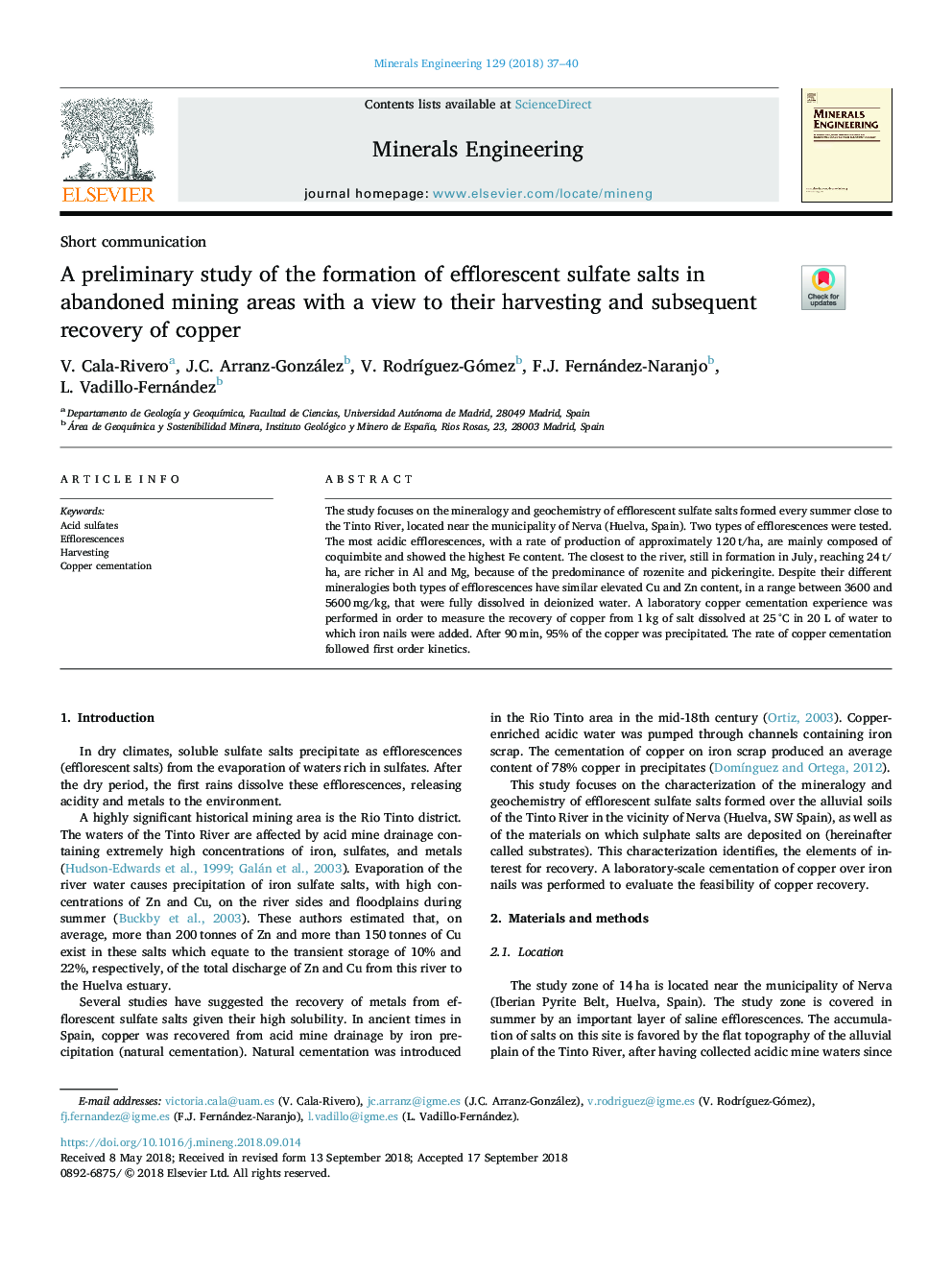| Article ID | Journal | Published Year | Pages | File Type |
|---|---|---|---|---|
| 10225217 | Minerals Engineering | 2018 | 4 Pages |
Abstract
The study focuses on the mineralogy and geochemistry of efflorescent sulfate salts formed every summer close to the Tinto River, located near the municipality of Nerva (Huelva, Spain). Two types of efflorescences were tested. The most acidic efflorescences, with a rate of production of approximately 120â¯t/ha, are mainly composed of coquimbite and showed the highest Fe content. The closest to the river, still in formation in July, reaching 24â¯t/ha, are richer in Al and Mg, because of the predominance of rozenite and pickeringite. Despite their different mineralogies both types of efflorescences have similar elevated Cu and Zn content, in a range between 3600 and 5600â¯mg/kg, that were fully dissolved in deionized water. A laboratory copper cementation experience was performed in order to measure the recovery of copper from 1â¯kg of salt dissolved at 25â¯Â°C in 20 L of water to which iron nails were added. After 90â¯min, 95% of the copper was precipitated. The rate of copper cementation followed first order kinetics.
Keywords
Related Topics
Physical Sciences and Engineering
Chemical Engineering
Chemical Engineering (General)
Authors
V. Cala-Rivero, J.C. Arranz-González, V. RodrÃguez-Gómez, F.J. Fernández-Naranjo, L. Vadillo-Fernández,
